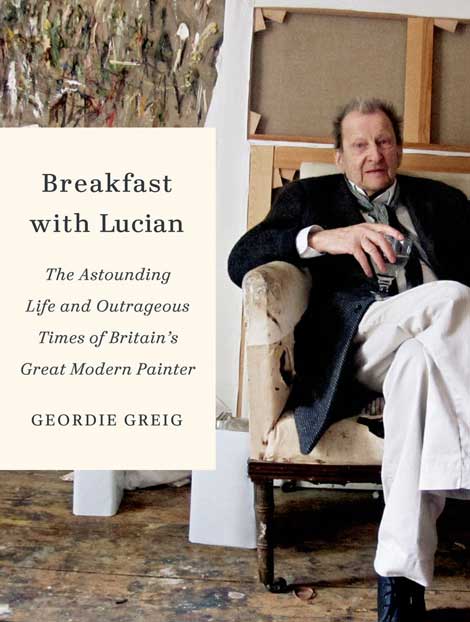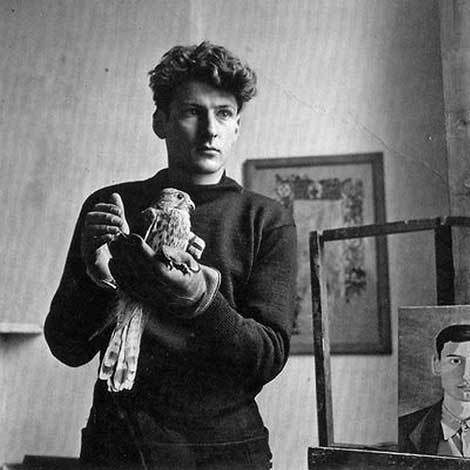There is a popular stereotype of the 20th-century artist as a hard-living bon vivant who lives to paint and leaves a trail of broken hearts. Most current versions this type have a brand to maintain. The last thing you can imagine such a person wanting is privacy. Lucian Freud (grandson of Sigmund) fits the bill of somebody who lived life to its fullest and achieved a legacy for the ages, yet guarded his privacy with such an iron fist that no biographies appeared during his lifetime. Not that there wasn’t demand. One poor fellow who decided to chronicle his adventures in the 1980s was warned off of the project by gangsters. (One of the Kray brothers almost sat for a painting.) Another person who attempted an authorized version in the ’90s gave the manuscript to Freud to review. Freud paid the author a handsome sum and promptly killed it. While this won’t be the definitive posthumous biography, it might be the most fun.
The setup provides the kind of you-are-there glimpse that gives one a sense of what it might have been like to experience Freud in person. After a decade of cajoling, the author was allowed to join an elite group that met for breakfast at a closed restaurant. The constants were Lucian and his long-time assistant. It was where Lucian met with the few people he allowed into his private club. The book is assembled from information that the author gleaned over the course of his inclusion.
Since the book is comprised from anecdotes over a long period of time, the author has grouped them into categories that give them a readable flow. These sections include things like “Early Days,” “First Loves,” a lively section called “Dealers and Gambling,” and “Offspring.”
A definitive list of offspring is a topic for its own book. He acknowledged 14 offspring in his will. Conservative estimates place the actual number around 20, though some wags assert that it could easily be as high as 40. Sex was a driving force in his life. One portrait sitter shares the tale of a gorgeous woman appearing at his studio door during an intense session of painting. After excusing himself for a moment, he takes her to the bathroom for a noisy conjugal event, and then carries on afterward with no mention of what just occurred.
Although primarily heterosexual, there are probable physical acts with men as well. Gay friends regarded him as a sexual opportunist and a cock tease. The single man he expressed a desire to sleep with was a famous jockey. Small and wiry himself, his love of horses caused him to consider that vocation. During art school, he slept in a stable to be near his beloved equine friends, which caused fellow students to complain that he smelled.
The layout of this book does a remarkable job of giving one a sense of how his life leaked into his art. Often when a painting documents a lover or a breakthrough in his technique, the painting will appear within a page or two of the text. We are also offered photos of Lucian through the years. The text is a lively mix of quips from friends, interview snatches from Lucian, and research to fill in any gaps. Lucian’s life is so compartmentalized that his love affairs often had an air of a bedroom farce, with one lover being whisked out of a room, as another one entered.
That compartmentalization takes on an extra air of frenzy when well-heeled dealers and collectors receive late night calls and visits for commissions to pay gambling debts. In one instance, a dealer expecting to hear that the debt was a few thousand pounds, reeled when the amount turned out to be £2.5 million. The most interesting part of that compartment is that once he could afford to lose those amounts (his estate when he passed was about £96 million) he lost the urge to gamble, as it didn’t feel like he could “lose everything.”
What one learns from this book is that Lucian Freud led his life exactly as he pleased. He guarded his privacy to an extent that struck some as pathological. His primary motivators were sex and paint. He mixed with every strata of society and will no doubt be the subject of biographies for years to come. As an opening volley to this genre, this book both sates and whets the appetite for more.
Breakfast With Lucian: The Astounding Life and
Outrageous Times of Britain’s Great Modern Painter
by Geordie Greig
Illustrated. 260 pp.
Farrar, Straus & Giroux. $30



